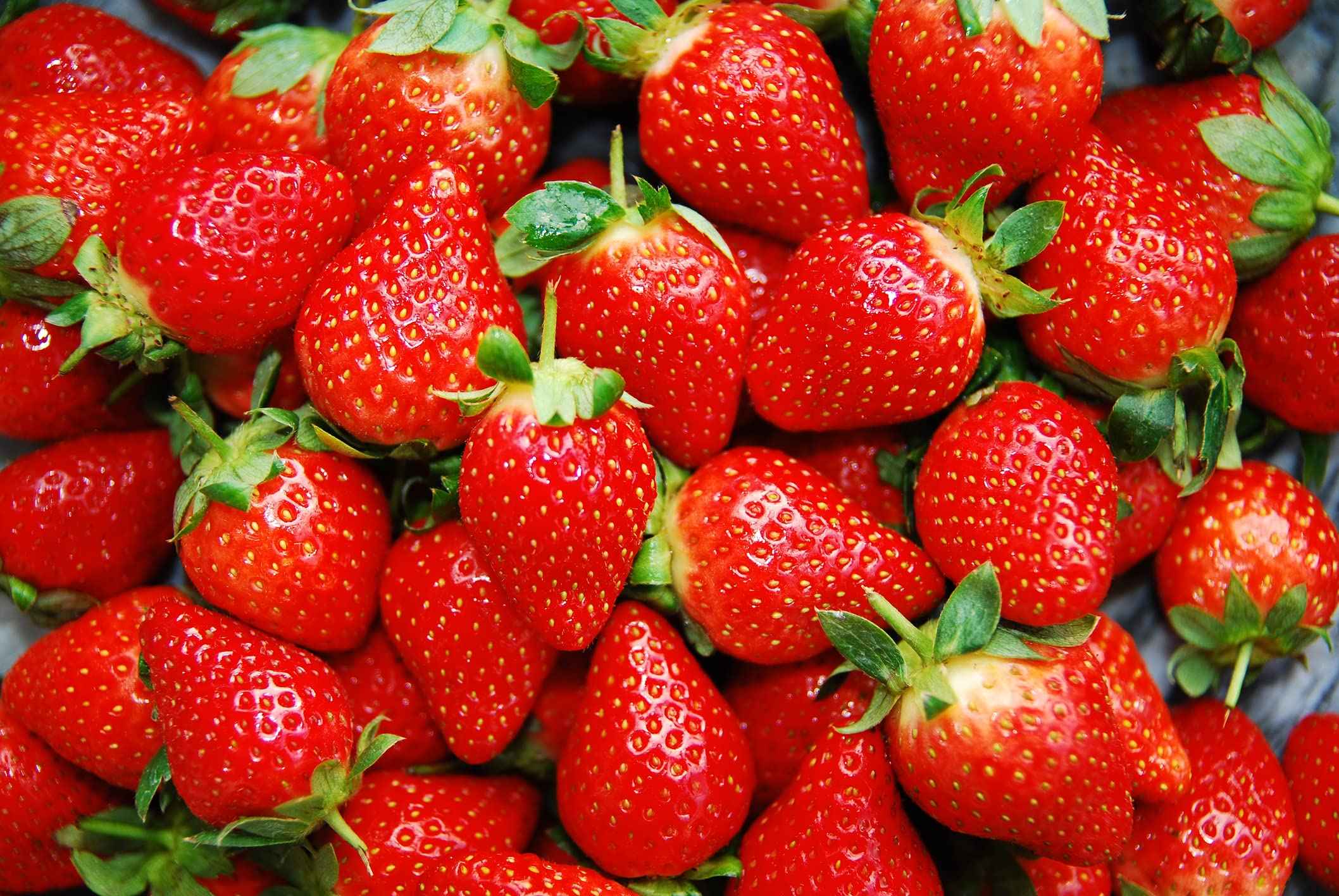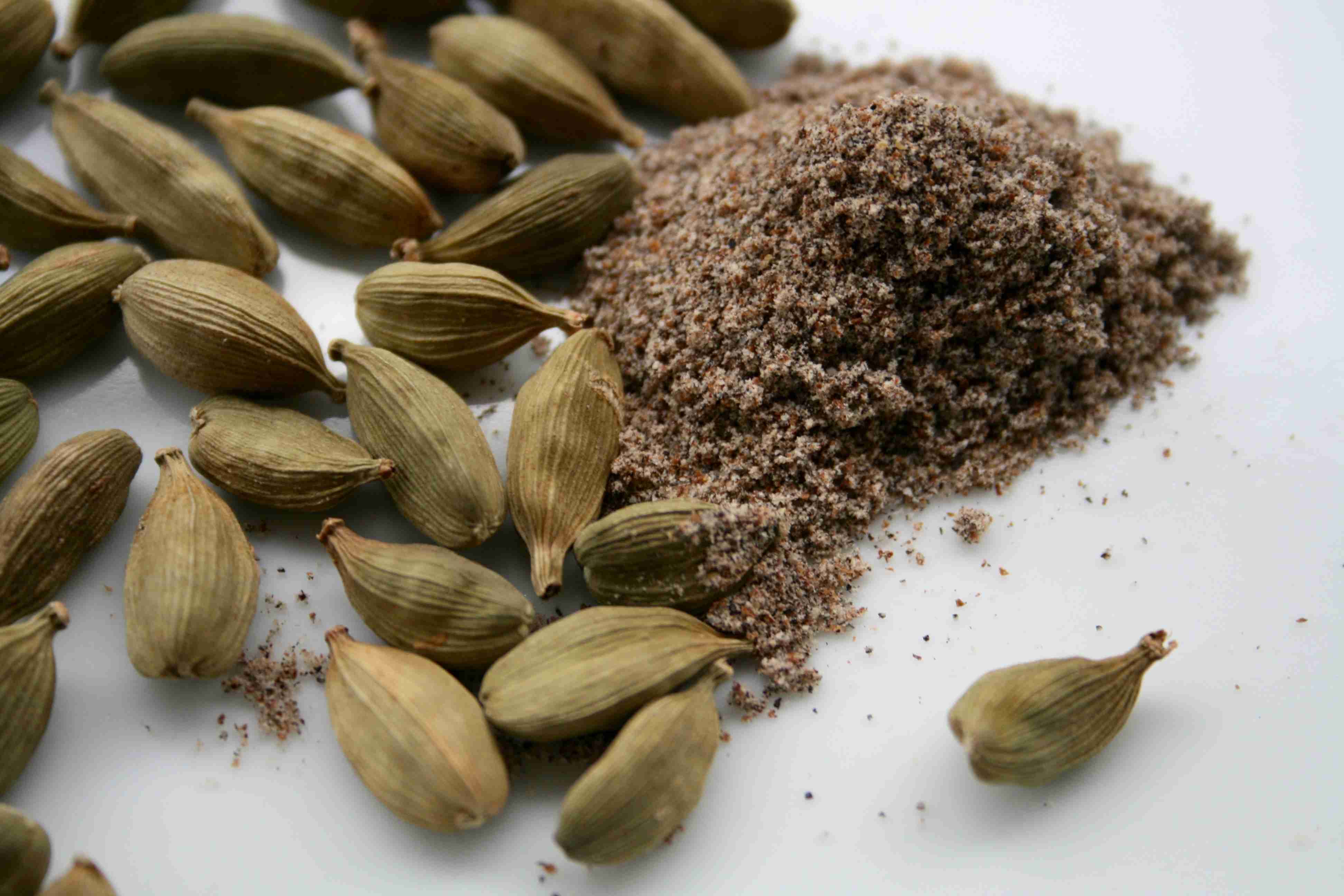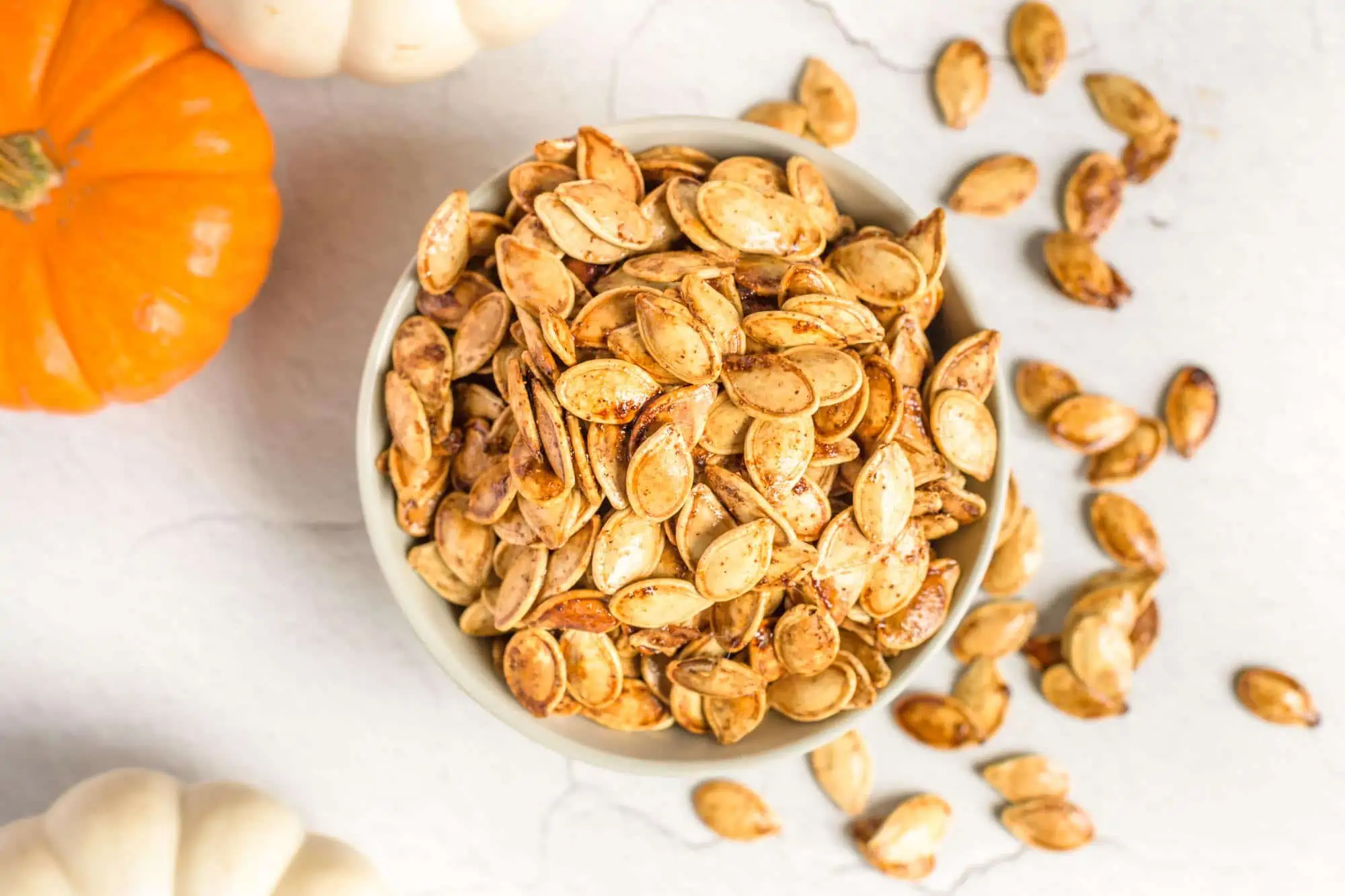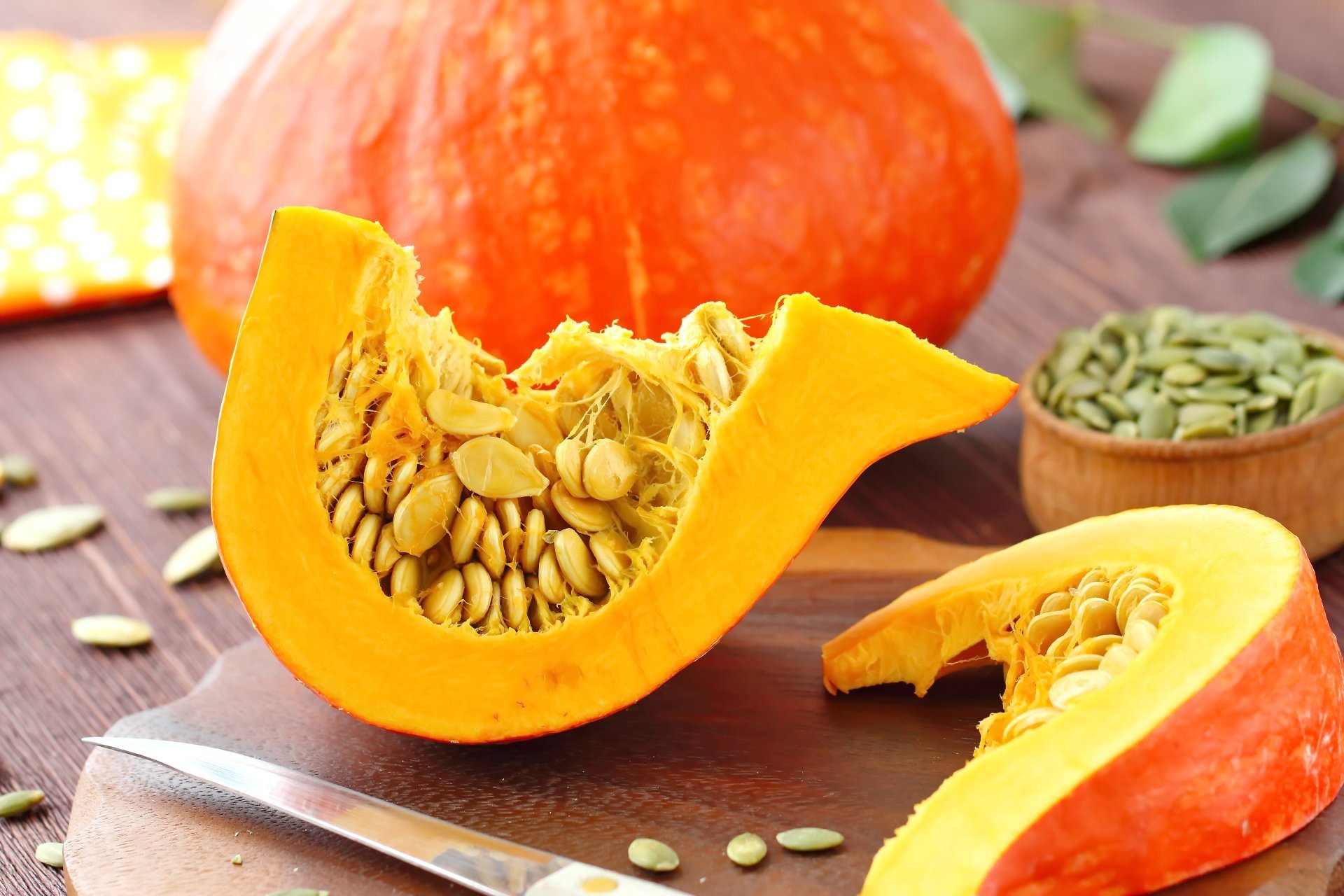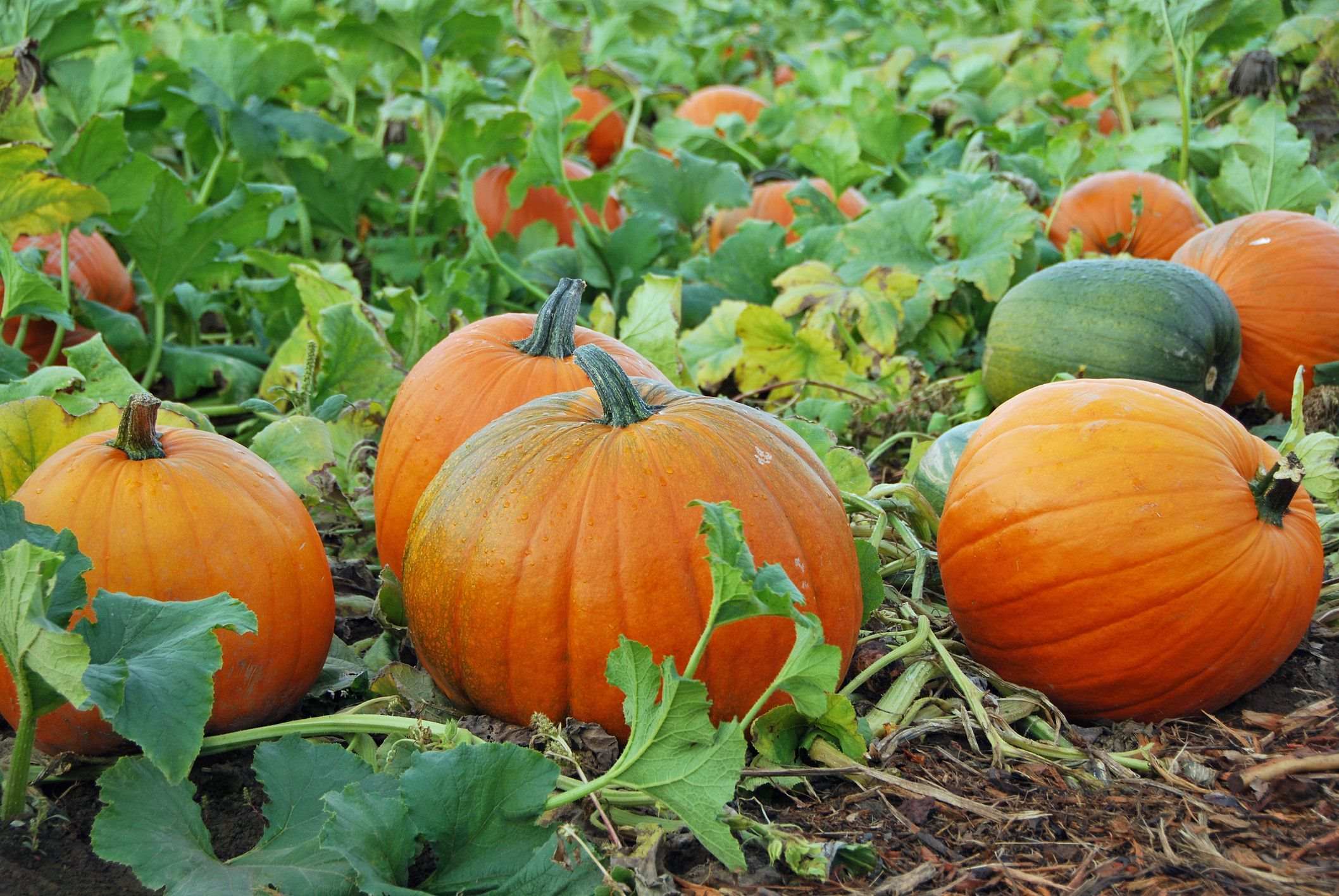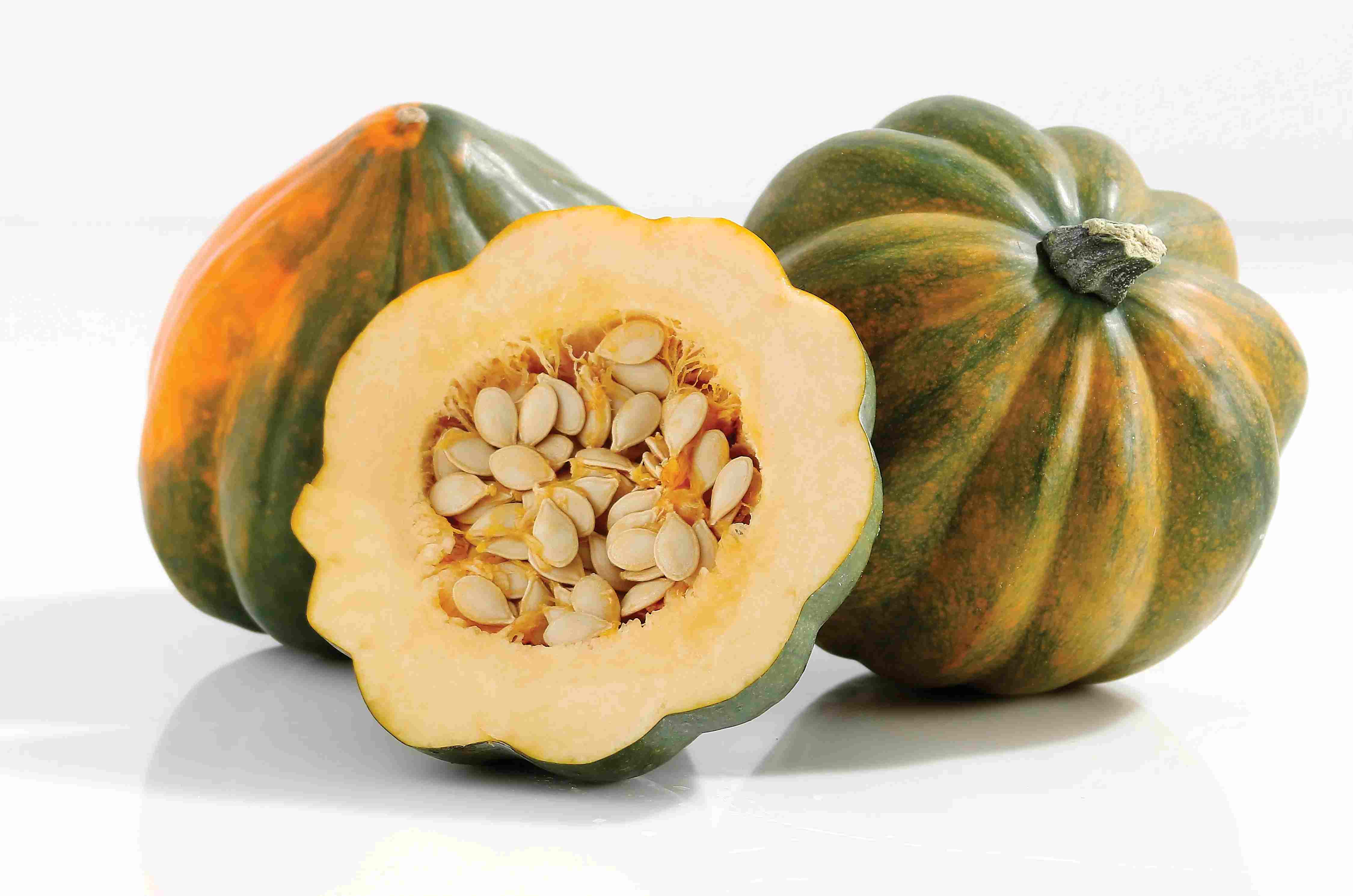Home>Gardening Tips and Tricks>Eco-Friendly Gardening>How Many Seeds Are In A Pumpkin
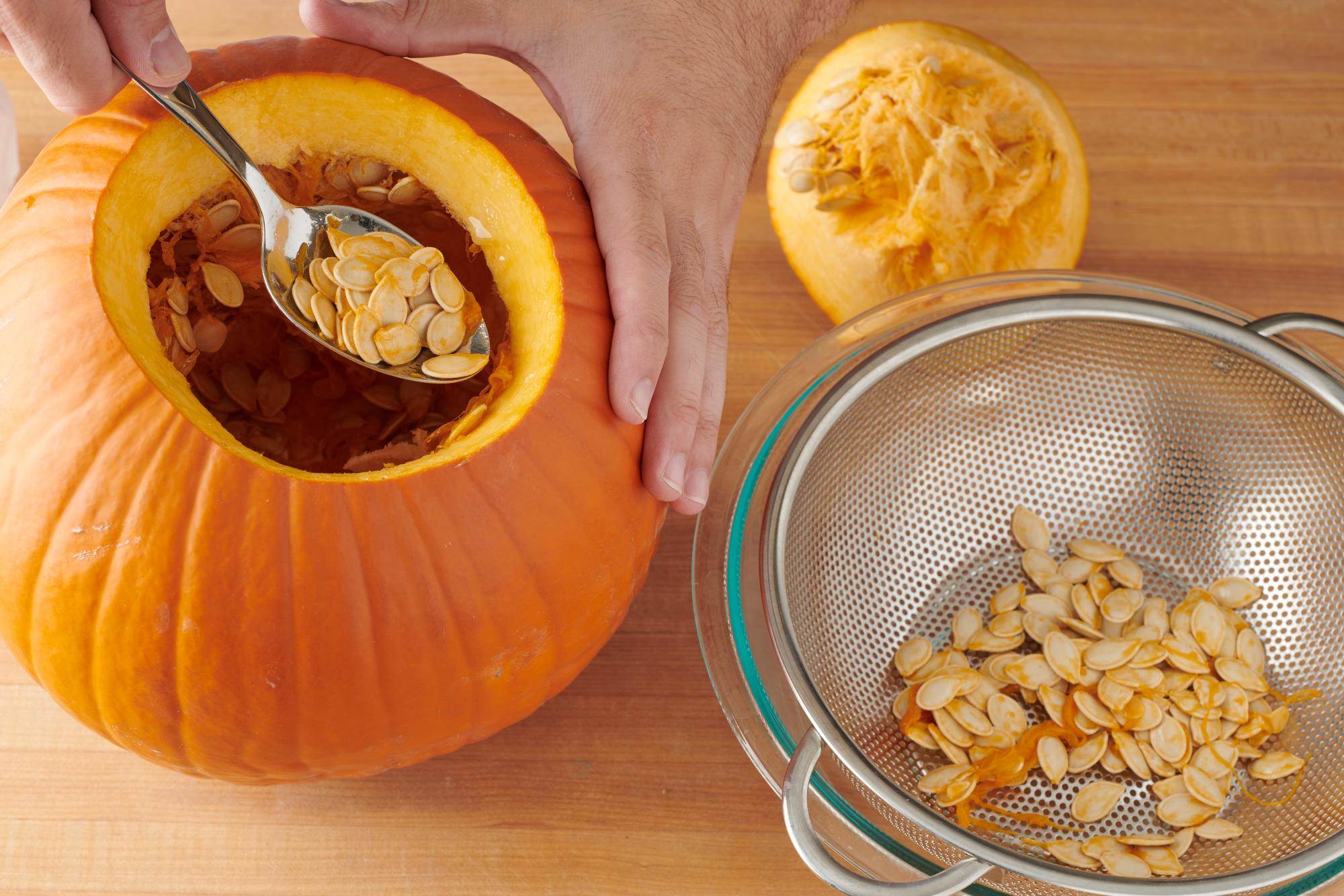

Eco-Friendly Gardening
How Many Seeds Are In A Pumpkin
Published: September 12, 2023
Learn about eco-friendly gardening and discover how many seeds are in a pumpkin. Start your sustainable garden today!
(Many of the links in this article redirect to a specific reviewed product. Your purchase of these products through affiliate links helps to generate commission for Chicagolandgardening.com, at no extra cost. Learn more)
Table of Contents
Introduction
Welcome to the fascinating world of pumpkins! These vibrant orange fruits are not only delicious and versatile in the kitchen, but they also harbor a hidden treasure that often goes unnoticed – their seeds. Pumpkin seeds, also known as pepitas, are not only nutritious but also hold great value in the realm of gardening and sustainability.
Gardeners and eco-conscious individuals have increasingly turned to eco-friendly gardening practices to mitigate the adverse effects of conventional gardening techniques. One such practice is the incorporation of eco-friendly gardening methods that promote sustainability and minimize harm to the environment.
In this article, we will explore the importance of pumpkin seeds and how they can contribute to eco-friendly gardening. Furthermore, we will delve into the factors that influence the number of seeds found in a pumpkin, as well as the methods used to obtain accurate seed counts. Finally, we will discuss the various uses and benefits of pumpkin seeds in both gardening and everyday life.
By understanding the potential of pumpkin seeds and their role in eco-friendly gardening, we can make informed decisions about how to incorporate them into our gardening practices. Whether you’re a seasoned gardener or just starting out, this article will provide you with valuable insights into the power and potential of these humble seeds.
Importance of Pumpkin Seeds
Pumpkin seeds are not just a delicious snack; they also play a vital role in promoting eco-friendly gardening practices and sustainable living. Here are several reasons why pumpkin seeds are highly valued in the gardening community:
- Nutritional Value: Pumpkin seeds are packed with essential nutrients, including healthy fats, protein, fiber, vitamins, and minerals. Incorporating these nutrient-rich seeds into your diet can boost your overall well-being.
- Biodiversity: By saving and planting pumpkin seeds from heirloom varieties, gardeners contribute to preserving biodiversity. Heirloom pumpkins come in various shapes, sizes, and colors, ensuring a diverse and vibrant garden landscape. This helps maintain a healthy ecosystem by supporting pollinators and beneficial insects.
- Seed Saving: Growing pumpkins from saved seeds allows gardeners to become self-sufficient and reduce reliance on commercial seed sources. By saving seeds from healthy and productive pumpkins year after year, gardeners can develop their unique adaptations and traits, tailored to their specific growing conditions.
- Composting: Pumpkin seeds, like other kitchen scraps, can be composted to create nutrient-rich soil amendments. By composting pumpkin remnants, including the seeds, you divert waste from landfills and contribute to a healthier planet.
- Educational Opportunities: Pumpkins provide a wonderful learning experience for children and adults alike. Saving and planting seeds teaches valuable lessons about the life cycle of plants, responsible stewardship of the environment, and the joy of growing your food from scratch.
- Community Engagement: The act of sharing pumpkin seeds with neighbors, friends, and local gardening clubs fosters a sense of community and connection. It provides an opportunity to exchange gardening tips, foster friendships, and strengthen the bond between people and nature.
As you can see, pumpkin seeds hold immense importance beyond their culinary uses. They serve as a gateway to eco-friendly gardening practices, nutritional well-being, and fostering a deep appreciation for nature’s gifts. By recognizing the value of pumpkin seeds, we can embrace sustainable gardening and make a positive impact on our environment and communities.
Factors Affecting Number of Seeds
The number of seeds found within a pumpkin can vary significantly based on several factors. Understanding these factors can help gardeners make informed decisions when selecting pumpkins for seed saving or optimizing seed production. Here are some key factors that influence the number of seeds in a pumpkin:
- Pumpkin Variety: Different pumpkin varieties have varying seed counts. Some varieties are bred for larger fruit size, while others prioritize seed production. Generally, larger pumpkins tend to have more seeds compared to smaller ones, although this is not always the case.
- Pollination: Successful pollination is crucial for seed formation. Pumpkins rely on pollinators, such as bees, to transfer pollen from the male to the female flowers. Insufficient pollination can result in poor seed set and lower seed count. To ensure adequate pollination, it’s essential to attract pollinators to your garden and provide a diverse range of flowering plants.
- Fruit Maturity: The stage of fruit maturity can impact the number of seeds. Pumpkins harvested prematurely may have fewer developed seeds compared to fully mature pumpkins. It’s important to wait until the pumpkin reaches its optimal maturity level before harvesting to maximize seed production.
- Cultural Practices: How pumpkins are grown and cared for can also influence seed count. Factors such as proper fertilization, adequate water supply, and disease control can contribute to healthy fruit development and, consequently, higher seed numbers.
- Seed Extraction Method: The method used to extract seeds from the pumpkin can affect seed count and quality. Careful and precise techniques, such as hand removal or gentle scraping, ensure minimal damage to the seeds. Rough or aggressive methods may lead to seed loss or damage, reducing the overall count.
It’s important to note that while these factors can impact the number of seeds in a pumpkin, the quality of the seeds is equally crucial. Healthy, well-developed seeds are more likely to germinate and produce vigorous plants. When selecting pumpkins for seed saving, it’s essential to consider both seed count and quality to ensure successful future harvests.
Research Methods
In order to accurately determine the number of seeds in a pumpkin, researchers have developed various methods to obtain reliable seed counts. These research methods have been instrumental in understanding the factors that influence seed count and ensuring the accuracy of seed-related data. Here are some commonly used research methods:
- Weighing Method: This method involves weighing a known quantity of seeds and then weighing the entire pumpkin. By comparing the weight of the seeds to the weight of the pumpkin, researchers can estimate the number of seeds. This method provides a quick and efficient way to obtain an approximate seed count.
- Dissection Method: The dissection method involves cutting open the pumpkin and manually counting the seeds. This method provides the most accurate seed count but can be time-consuming, especially for larger pumpkins. Dissection is typically used for research purposes or when an exact seed count is required.
- Seed Counting Machine: As technology has advanced, seed counting machines have become available to automate the seed counting process. These machines use specialized sensors or imaging systems to count the seeds accurately and efficiently. This method is particularly useful when dealing with large quantities of pumpkins or conducting seed-related studies.
- Statistical Sampling: In situations where it is not feasible to count all the seeds, statistical sampling techniques can be employed. Researchers select a representative sample of pumpkins, count the seeds in each pumpkin, and extrapolate the data to estimate the overall seed count. This method allows for a reasonable estimate while reducing the time and effort required for complete counts.
- Historical Data Analysis: Another approach to estimating seed count is by analyzing historical data. By studying previous records and seed counts from similar pumpkin varieties and conditions, researchers can make informed predictions about seed count. This method is useful when conducting comparative studies or when precise seed counts are not necessary.
Each research method offers its own advantages and limitations, and the choice of method depends on the specific research objectives and available resources. These methods have played a critical role in advancing our understanding of pumpkin seed count variation and informing seed-related practices in gardening and agriculture.
Results and Findings
Numerous studies have been conducted to explore the variation in seed count among different pumpkin varieties and the factors influencing seed production. These studies have provided valuable insights into the world of pumpkin seeds and offered interesting findings. Here are some of the key results and findings from these studies:
- Variations in Seed Count: Researchers have observed significant variations in seed count among different pumpkin varieties. Some varieties consistently produce a high number of seeds, while others have a lower seed count. The size and weight of the pumpkin fruit do not always correlate with the number of seeds, indicating that other factors are at play.
- Impact of Pollination: Adequate pollination has been identified as a critical factor in seed production. Pumpkins that experience successful pollination tend to have higher seed counts compared to those with insufficient or improper pollination. This emphasizes the importance of attracting pollinators to the garden and creating a pollinator-friendly environment.
- Effect of Fruit Maturity: Studies have shown that the stage of fruit maturity can influence seed count. Fully mature pumpkins typically have a higher number of well-developed seeds compared to those harvested prematurely. This highlights the importance of allowing pumpkins to reach their optimal maturity before harvesting for maximum seed production.
- Genetic Variability: Genetic variability among pumpkin varieties plays a significant role in seed count. Different varieties have distinct genetic traits that influence seed production. By selecting and saving seeds from varieties known for their high seed count, gardeners can cultivate plants with increased seed production potential.
- Effect of Cultural Practices: Research has indicated that proper cultural practices, such as optimal fertilization, adequate watering, and disease control, can positively affect seed production. Providing the necessary nutrients and maintaining overall plant health promotes optimal fruit development and higher seed counts.
- Environmental Factors: Environmental factors, including temperature, humidity, and sunlight, can impact seed count. Pumpkins grown under ideal environmental conditions tend to produce more seeds compared to those grown under stress or unfavorable conditions. Creating a suitable growing environment is crucial for maximizing seed production.
These findings highlight the complex nature of seed count in pumpkins and shed light on the multifaceted factors that influence seed production. Understanding these results can empower gardeners to make informed decisions when selecting pumpkin varieties and implementing gardening practices to optimize seed count and overall yield.
Variations in Seed Count
When it comes to pumpkins, the number of seeds can vary significantly between different varieties and even within the same variety. Understanding these variations is key to making informed decisions in seed selection, gardening practices, and seed-saving endeavors. Here are some of the factors that contribute to variations in seed count:
- Pumpkin Variety: Each pumpkin variety has its own genetic makeup and characteristics that influence seed count. Some varieties are known to produce an abundance of seeds, while others have fewer seeds per fruit. It’s important to research and select varieties based on specific seed count requirements or preferences.
- Fruit Size and Weight: Generally, larger pumpkins tend to have more seeds than smaller ones. However, this is not always the case as seed count can be influenced by other factors as well. It’s important to note that the size and weight of the pumpkin alone may not accurately determine the number of seeds it contains.
- Growing Conditions: The growing conditions, including soil quality, sunlight exposure, temperature, and water availability, can strongly impact seed production. Optimal growing conditions provide the necessary resources for healthy plant development, leading to higher seed counts.
- Pollination: Successful pollination is critical for seed development. Inadequate pollination, such as low bee activity or limited access to male and female flowers, can result in decreased seed count. Creating a pollinator-friendly garden environment can encourage effective pollination and increase seed production.
- Cross-Pollination: When different pumpkin varieties or species grow in close proximity, cross-pollination may occur. Cross-pollination can lead to variations in seed count as well as unique characteristics in the resulting fruits. To maintain the purity of a specific variety, isolate plants or consider hand-pollination techniques.
- Seed Saving Practices: The quality and viability of saved seeds can also impact seed count. When saving seeds, it is essential to choose fully mature, healthy fruits with abundant seeds. Proper cleaning, drying, and storage techniques are equally important to ensure seed longevity and maintain optimal germination rates.
Understanding these variations in seed count allows gardeners to make informed choices when selecting and saving seeds. By considering factors such as variety, growing conditions, pollination, and seed-saving practices, gardeners can optimize their seed counts and ultimately enhance their gardening experience.
Seed Count Comparison
When it comes to choosing pumpkin varieties or assessing seed production potential, comparing seed counts becomes crucial. While it’s important to remember that seed count can vary within a variety, comparing different varieties can provide valuable insights. Here is a seed count comparison between some popular pumpkin varieties:
- Atlantic Giant: This variety, known for its massive size, can produce an extraordinary number of seeds. It is not uncommon for Atlantic Giant pumpkins to contain hundreds or even thousands of seeds, making them an excellent choice for seed-saving enthusiasts.
- Jack Be Little: Jack Be Little pumpkins are small, decorative varieties that are popular for their miniature size. While they have a low seed count compared to larger varieties, they still produce a respectable number of seeds within each fruit.
- Connecticut Field: As a traditional heirloom variety, Connecticut Field pumpkins are favored for their versatility. They tend to have a moderate seed count, making them suitable for both carving and seed-saving purposes.
- Howden: Howden pumpkins are widely recognized for their ideal shape and size for carving. They typically have a generous seed count, making them a great choice for Halloween enthusiasts who want to save seeds for future plantings.
- Big Max: Big Max pumpkins are known for their remarkable size and weight, often reaching hundreds of pounds. With their giant proportions also come plentiful seeds, making them a popular choice among gardeners seeking substantial seed yields.
It’s important to note that the seed count comparisons provided here are based on general observations and may vary depending on individual growing conditions. Additionally, seasonal variations, pollination success, and plant health can influence seed counts within each variety. Therefore, it’s recommended to conduct personal observations and assessments for accurate seed count comparisons in real-world scenarios.
When comparing seed counts, consider your specific goals. If you are primarily interested in seed-saving, selecting pumpkin varieties with higher seed counts, such as Atlantic Giant or Howden, can be advantageous. On the other hand, if you are focused on smaller decorative pumpkins, like Jack Be Little, the seed count may not be as significant a factor in your decision-making process.
By comparing seed counts, gardeners can make informed choices when selecting pumpkin varieties for seed saving, cooking, carving, or other purposes. It allows for a personalized approach to gardening, tailored to individual preferences and requirements.
Utilization of Pumpkin Seeds
Pumpkin seeds are not just a byproduct of carving pumpkins or a tasty snack; they have a wide range of uses and benefits. From culinary delights to natural remedies, here are some ways in which pumpkin seeds can be utilized:
- Culinary Delights: Pumpkin seeds can be roasted, salted, and seasoned to create a delicious and nutritious snack. They can also be used as a topping for salads, soups, and desserts, adding a crunchy texture and a nutty flavor. Pumpkin seed oil, extracted from roasted seeds, is a flavorful addition to dressings and sauces.
- Baking Ingredient: Ground pumpkin seeds can be used as an alternative to flour in baked goods, providing a gluten-free and nutrient-dense option. Incorporating pumpkin seeds into muffins, cookies, and bread adds richness and valuable nutrients to your favorite recipes.
- Nutritional Powerhouse: Pumpkin seeds are a nutritional powerhouse, containing essential nutrients such as protein, fiber, healthy fats, vitamins, and minerals. They are particularly rich in zinc, magnesium, and antioxidants, which offer numerous health benefits, including improved immune function and heart health.
- Gardening Aid: Crushed or ground pumpkin seeds can be used as a natural pest deterrent when sprinkled around plants susceptible to pests. The seeds’ rough texture irritates pests and helps protect the garden from unwanted visitors. Additionally, pumpkin seeds can be saved for planting, contributing to sustainable gardening practices.
- Beauty and Skincare: Pumpkin seed oil is a popular ingredient in beauty and skincare products. It is rich in antioxidants and essential fatty acids, which help moisturize and nourish the skin. Incorporating pumpkin seed oil into homemade skincare recipes or using pumpkin seed oil-infused products can promote healthy, glowing skin.
- Medicinal Remedy: Traditional medicine recognizes pumpkin seeds for their potential health benefits. They have been used to support healthy urinary function and prostate health in men. Pumpkin seed extract and supplements may help alleviate symptoms related to prostate enlargement and urinary issues.
These are just a few examples of the versatile uses of pumpkin seeds. Whether you’re incorporating them into your culinary creations, using them in your skincare routine, or exploring their potential health benefits, pumpkin seeds offer an array of possibilities for both the kitchen and well-being.
By utilizing pumpkin seeds in various ways, we can fully embrace the sustainable and eco-friendly nature of gardening. From minimizing waste to promoting plant health, pumpkin seeds provide us with a valuable resource that goes beyond their culinary appeal.
Conclusion
Pumpkin seeds are much more than a snack or a Halloween decoration. They hold immense value in the world of eco-friendly gardening and sustainable living. From their nutritional benefits to their diverse uses, pumpkin seeds offer a wealth of possibilities for gardeners and individuals seeking a more environmentally conscious lifestyle.
Throughout this article, we explored the importance of pumpkin seeds in eco-friendly gardening. We discussed the factors that can influence seed count and their implications for seed production. We also delved into various research methods used to obtain accurate seed counts and examined the variations in seed count among different pumpkin varieties.
It is evident that pumpkin seeds play a crucial role in promoting sustainability and biodiversity. They offer opportunities for seed-saving, composting, and community engagement. By understanding the factors affecting seed count and utilizing the seeds in various ways, we can maximize their potential and contribute to a greener and more sustainable world.
Whether you’re a gardener looking to enhance your harvest or an individual seeking nutritious snacks and natural remedies, incorporating pumpkin seeds into your life can bring numerous benefits. From their culinary versatility and nutritional value to their contribution to pollination and soil health, pumpkin seeds provide a valuable resource for both gardeners and sustainability enthusiasts.
As you embark on your gardening journey or simply explore the many uses of pumpkin seeds, remember to embrace eco-friendly practices, such as seed-saving, proper pollination, and composting. By doing so, you not only enhance your own garden but also contribute to a healthier planet and a more sustainable future.
So, the next time you carve a pumpkin or enjoy a tasty snack, don’t forget about the hidden treasure inside – the precious pumpkin seeds. Embrace their potential and become part of the eco-friendly gardening movement, where every seed planted brings us one step closer to a greener and more sustainable world.
References
- Gruver, J., & Peter, G. (2009). Pumpkin Production Guide. University of California Agriculture and Natural Resources. http://ucmanagedrought.ucdavis.edu/PBC/documents/PumpkinProductionGuide2013.pdf
- Li, X., Kushad, M. M., & Zivanovic, S. (2005). Nitrate uptake and reduction in pumpkins. Communications in Soil Science and Plant Analysis, 36(7-8), 981-989. doi: 10.1081/CSS-200059955
- Michigan State University Extension. (2018). Specialty Pumpkins and Winter Squash. Bulletin E-3210. https://www.canr.msu.edu/uploads/files/PumpkinandWinterSquashMN9-11.pdf
- Plants For A Future. (2021). Cucurbita maxima – Duchesne ex Lam. https://pfaf.org/user/plant.aspx?LatinName=Cucurbita+maxima
- Smith, J. L., & Walters, K. F. (2019). Pumpkin Production: Pollination and Fruit Set. University of Kentucky Cooperative Extension Service, Horticulture Fact Sheet. https://hardin.ca.uky.edu/files/ag-pollination_pumpkin_production.pdf
Please note that the references provided serve as a starting point and additional sources may be available to further explore the topics discussed in this article.
